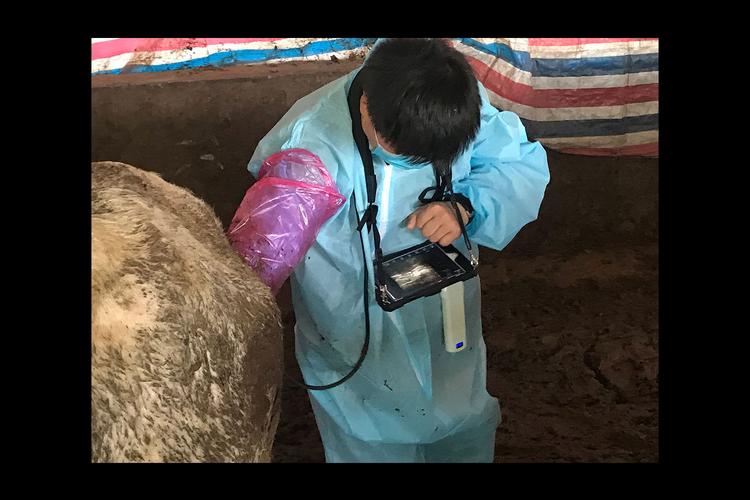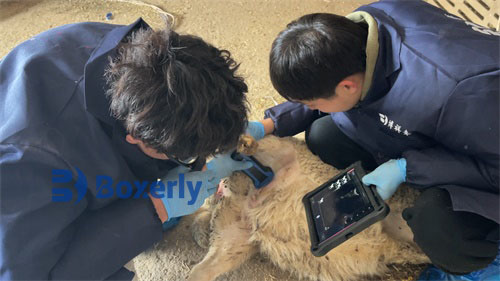As a scientific, convenient, and effective method, B-ultrasound based backfat diagnosis has been widely applied and rapidly developed in animal reproduction and veterinary diagnosis. Regarding the testing of meat performance, including the determination of economic traits such as backfat thickness, hip fat, eye muscle area, and intermuscular fat content, these are important indicators in genetic breeding and performance testing.

In the ultrasound image of the backfat machine, there are three strong echo bands. The outermost band is the skin of the animal, the middle band is the boundary between the inner layer of the skin and the subcutaneous fat layer, and the innermost band is the boundary between the bottom of the subcutaneous fat and the lumbar muscle. In ultrasound imaging, the eye muscles produce a clear and visible elliptical contour due to the strong reflection of the lumbar muscle membrane. As the upper and lower bounds of the lumbar fascia face the ultrasound emission line, a linear boundary is formed, while only point like echo bands are produced at both ends. Move the trackball along the contour of the eye muscles to the starting point, and the data bar will display the area of the eye muscles in cm2.
Imported backfat analyzer
In the process of genetic improvement of meat producing livestock, the commonly used method for selecting breeding sheep is to evaluate meat performance based on body size, physique, and weight. However, this method has limitations in that it has a long selection cycle and cannot directly select genetic traits related to meat quality, which cannot meet consumers' preference for lean meat consumption. The backfat analyzer suggests that in the breeding process, it is not possible to estimate the breeding value of lean meat percentage by killing male livestock, measuring carcass weight and lean meat percentage. By using a backfat analyzer to measure the area of eye muscles in vivo and calculate the correlation between eye muscle area and lean meat, the lean meat percentage of the livestock can be determined without affecting its production. This is beneficial for early live selection and accelerates the breeding process.
Compared with the data measured after slaughter, the results of the live measurement of eye muscle area by B-ultrasound backfat analyzer are relatively small because in order to obtain clear eye muscle images, a certain pressure must be applied to the probe, which will cause pressure on the sheep's back muscle, resulting in a slightly smaller area than the normal value. When measuring the area of the eye muscles after slaughter, the cross-section of the muscles should be slightly larger than the normal value by cutting from the ribs at 12-13 and tracing the contour with sulfuric acid paper. But this difference does not affect the correlation between eye muscle area and lean meat percentage.
The difference in eye muscle area between Altay sheep and Xinjiang goats of the same age is significant, which is in line with their respective growth patterns. As a meat sheep breed, Altay grows faster than goats. According to backfat measurements, 1.5-year-old Kazakh sheep weigh 37-40kg, while the average weight of Qaidam cashmere goats of the same age is 20kg. The lean meat percentage of the carcass is not only related to the area of the eye muscles, but also to the thickness of the fat. As the fat thickness of the sheep carcass varies, which part of the body can best represent the fat thickness of the whole body and has the highest correlation coefficient with lean meat percentage is worth studying.








